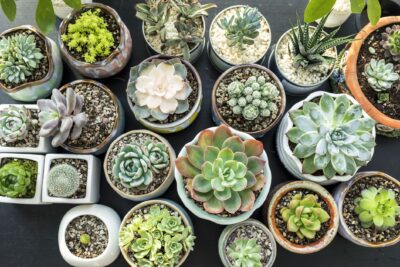
Succulent Identification: Discovering the Tiny Yellow Flowered Variety
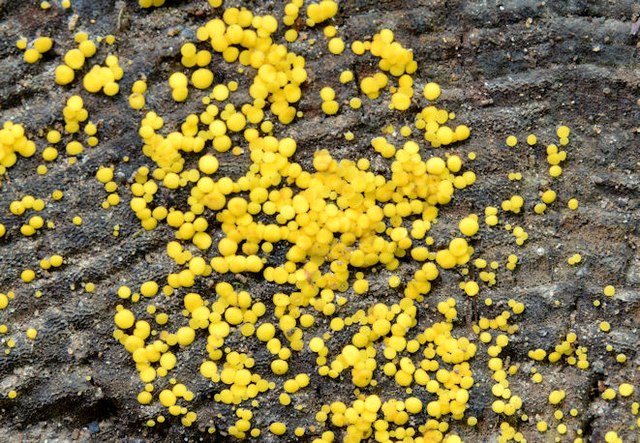
Succulents have become incredibly popular in the world of gardening and home decor. These unique plants, known for their thick, fleshy leaves and ability to store water, come in a wide range of shapes, sizes, and colors. One particular variety that has caught the attention of succulent enthusiasts is the tiny yellow flowered succulent. With its vibrant yellow blooms and compact size, this succulent adds a touch of cheerfulness to any collection.
We will delve into the world of succulent identification and focus specifically on the tiny yellow flowered variety. We will explore the characteristics that make this succulent unique, such as its growth habit, leaf structure, and of course, its beautiful yellow flowers. Additionally, we will provide tips on how to care for this variety, including proper watering techniques, sunlight requirements, and recommended potting soil. Whether you are a seasoned succulent lover or just starting your collection, this article will help you identify and care for the tiny yellow flowered succulent with ease.
- Research different types of succulents that have tiny yellow flowers
- Use a plant identification app to help determine the specific variety
- Consult a botanist or succulent expert for assistance in identifying the plant
- Look for specific characteristics, such as leaf shape or growth pattern, to identify the succulent
- Compare photographs of different succulents to find a match
- Join online succulent forums or groups to seek help from other enthusiasts
- Visit a local nursery or garden center and ask for guidance from the staff
- Use online plant databases to search for succulents with tiny yellow flowers
- Keep a plant journal and document important details about the succulent to aid in identification
- Explore books or online resources dedicated to succulent identification
- Frequently Asked Questions
Research different types of succulents that have tiny yellow flowers
If you are a succulent enthusiast and love the vibrant beauty of yellow flowers, you might be intrigued to explore the variety of succulents that boast tiny yellow blooms. These delicate blossoms add a touch of sunny cheer to any succulent collection or garden. In this article, we will dive into the world of succulent identification and help you discover the fascinating tiny yellow flowered varieties.
1. Sedum mexicanum 'Lemon Ball'
One popular succulent with tiny yellow flowers is the Sedum mexicanum 'Lemon Ball'. This low-growing succulent features dense clusters of small, round leaves that resemble tiny green balls. In the summer, it produces an abundance of star-shaped yellow flowers, creating a stunning display.
2. Echeveria chihuahuaensis
The Echeveria chihuahuaensis is another succulent that blooms with charming yellow flowers. This compact succulent forms rosettes of fleshy, blue-green leaves with pinkish edges. In the spring, it sends up tall stalks adorned with clusters of small, bell-shaped yellow flowers, adding a touch of elegance to its appearance.
3. Graptopetalum paraguayense 'Ghost Plant'
The Graptopetalum paraguayense, commonly known as the 'Ghost Plant', is a captivating succulent with pale blue-green leaves that have a powdery, ghostly appearance. While the foliage steals the show, this plant surprises with its delicate yellow flowers that emerge in late spring or early summer.
4. Portulaca grandiflora
If you are looking for a trailing succulent with tiny yellow flowers, the Portulaca grandiflora is an excellent choice. This drought-tolerant succulent features succulent leaves and produces vibrant blooms in a wide range of colors, including various shades of yellow. Its flowers open during the day and close at night, creating a dynamic visual display.
 Understanding Fuzzy Leaves on Succulent Plants: Normal Characteristics
Understanding Fuzzy Leaves on Succulent Plants: Normal Characteristics5. Crassula capitella 'Campfire'
The Crassula capitella 'Campfire' is a unique succulent with eye-catching foliage and tiny yellow flowers. Its leaves start as green at the base and transition to vibrant red or orange at the tips, resembling a blazing campfire. When it blooms, it produces clusters of small, star-shaped yellow flowers that beautifully contrast with the fiery foliage.
Exploring the world of succulent identification can be a fascinating journey, especially when it comes to discovering the various types that boast tiny yellow flowers. Whether you prefer the compact rosettes of the Echeveria chihuahuaensis or the trailing beauty of the Portulaca grandiflora, these succulents will undoubtedly add a touch of sunshine to your collection or garden.
Use a plant identification app to help determine the specific variety
If you are new to the world of succulents and want to identify a tiny yellow flowered variety, using a plant identification app can be incredibly helpful.
These apps utilize advanced image recognition technology to analyze photos of plants and provide accurate identification results. By simply taking a clear photo of the succulent in question and uploading it to the app, you can receive instant information about its specific variety.
Some popular plant identification apps include PlantSnap, PictureThis, and iNaturalist. These apps have extensive databases of plant species, including various types of succulents. With their user-friendly interfaces, you can easily navigate through the app, search for specific characteristics, and find the exact variety you are looking for.
Additionally, many plant identification apps also provide detailed information about the care requirements, propagation methods, and common issues associated with each identified succulent variety. This can be incredibly beneficial for succulent enthusiasts who want to ensure they are providing the best possible care for their plants.
 Unique Succulent: A Ruby Necklace-Inspired Find
Unique Succulent: A Ruby Necklace-Inspired FindSo, if you are struggling to identify the specific variety of your tiny yellow flowered succulent, don't hesitate to give a plant identification app a try. It can save you time and effort while providing you with valuable information about your beloved plant.
Consult a botanist or succulent expert for assistance in identifying the plant
If you're struggling to identify a succulent with tiny yellow flowers, it's always a good idea to consult a botanist or succulent expert. These professionals have extensive knowledge and experience in identifying different types of succulents and can provide valuable insights.
When seeking assistance, it's helpful to provide as much information as possible about the plant. Take detailed notes on the plant's characteristics, such as its size, shape, color, and texture. Pay close attention to the arrangement of the leaves, the presence of thorns or spines, and any unique features. These details can greatly assist the expert in identifying the plant accurately.
Additionally, taking clear photographs of the succulent from various angles can be immensely helpful. Ensure that the images capture the plant's overall appearance, as well as close-ups of its leaves, flowers, and any distinguishing features. Providing visual documentation will aid the expert in their analysis and increase the chances of accurate identification.
When consulting a botanist or succulent expert, be prepared to answer questions about the plant's habitat, growing conditions, and any changes in its appearance or behavior. This information can provide valuable clues about the succulent's identity and help narrow down the possibilities.
Remember, identifying succulents can be challenging, especially with a vast array of species and hybrids available. It's always wise to seek professional guidance when in doubt. By consulting an expert, you can ensure accurate identification and gain valuable knowledge about your tiny yellow flowered succulent.
Look for specific characteristics, such as leaf shape or growth pattern, to identify the succulent
 Understanding Translucent Leaves: A Healthy Indicator for Succulents?
Understanding Translucent Leaves: A Healthy Indicator for Succulents?When it comes to identifying succulents, it's important to pay attention to specific characteristics that can help you determine the species. One of the key factors to look for is the shape of the leaves. Succulents come in a wide variety of leaf shapes, ranging from rosettes to cylindrical, and even paddle-like leaves.
Growth pattern can also play a role in identifying succulents. Some succulents have a trailing growth habit, while others grow in a compact, clumping manner. By observing the growth pattern, you can gain valuable insights into the type of succulent you are dealing with.
However, one of the most distinctive features that can help you identify a succulent is the presence of tiny yellow flowers. These delicate blooms add a touch of vibrancy to the plant and can be a tell-tale sign of a particular species.
Characteristics of succulents with tiny yellow flowers
If you come across a succulent with tiny yellow flowers, there are a few characteristics to take note of:
- Leaf shape: The leaves of succulents with tiny yellow flowers can vary in shape, but they are typically elongated and narrow.
- Growth pattern: These succulents often have a rosette or clumping growth pattern, with leaves arranged in a dense, overlapping manner.
- Flower size: The flowers of these succulents are small, usually measuring less than an inch in diameter.
- Flower color: As the name suggests, the flowers are yellow in color. They can range from pale yellow to a more vibrant, golden hue.
- Flowering season: Succulents with tiny yellow flowers typically bloom during the spring or summer months.
By keeping these characteristics in mind, you can narrow down your search and confidently identify the succulent species with tiny yellow flowers. Whether you're a beginner or an experienced succulent enthusiast, this knowledge will help you appreciate the unique beauty that these plants bring to your collection.
Compare photographs of different succulents to find a match
When it comes to identifying succulents, one of the most effective methods is to compare photographs. By examining the unique characteristics of each plant, you can start to narrow down the possibilities and eventually identify the specific variety.
 Cacti and Succulents: A Comprehensive Book Guide
Cacti and Succulents: A Comprehensive Book GuideHere are some steps to help you in your succulent identification journey:
- Collect clear and detailed photographs: Take close-up shots of the succulent from different angles, capturing its overall shape, color, and texture. Make sure the images are well-lit and in focus to accurately showcase the plant's features.
- Observe the rosette formation: Many succulents, including the tiny yellow flowered variety, have a rosette shape. Look for compact, tightly packed leaves arranged in a circular pattern. This characteristic can be a key factor in narrowing down your search.
- Examine the leaf structure: Pay attention to the shape, size, and arrangement of the leaves. Some succulents have thick, fleshy leaves, while others may have slender or spiky foliage. Additionally, note any patterns or markings on the leaves, such as stripes or spots.
- Take note of the flower characteristics: Although the focus of this article is on the tiny yellow flowered variety, it's essential to consider the appearance of the flowers. Look for details like the color, shape, and size of the blooms, as they can provide valuable clues for identification.
- Consult reliable identification resources: Once you have gathered your photographs and observed the succulent's unique features, you can turn to various identification resources. Online databases, plant identification apps, and botanical books can assist you in matching your succulent with known varieties.
Remember, the process of identifying succulents may require some patience and research. It's important to cross-reference the information you find and seek expert advice if needed. By comparing photographs and carefully examining the plant's characteristics, you'll be well on your way to discovering the specific variety of your tiny yellow flowered succulent.
Join online succulent forums or groups to seek help from other enthusiasts
If you're having trouble identifying the tiny yellow flowered succulent variety, one of the best ways to seek help is by joining online succulent forums or groups. These platforms are filled with fellow succulent enthusiasts who are more than willing to share their knowledge and expertise.
By posting clear pictures of your succulent and describing its characteristics, you can engage with the community and receive valuable insights. Don't forget to mention the specific details you're looking for, such as the scientific name or any unique features of the tiny yellow flowers.
Not only will joining online forums connect you with knowledgeable individuals, but it will also expose you to a wide range of succulent varieties. Often, members of these communities share their own experiences and post pictures of their own tiny yellow flowered succulents. This can serve as a visual reference, helping you in your identification process.
Be sure to participate actively in these online communities, offering your own expertise when you can and engaging in discussions. This not only helps you build connections but also increases your chances of receiving prompt and accurate identification assistance.
 Discover the Fascinating Foliage Patterns of the Snake-Like Succulent!
Discover the Fascinating Foliage Patterns of the Snake-Like Succulent!Remember, the succulent community is filled with passionate individuals who are eager to help one another. By joining online forums or groups, you open yourself up to a wealth of knowledge that can aid in your quest to identify the tiny yellow flowered succulent variety.
Visit a local nursery or garden center and ask for guidance from the staff
If you're looking to identify a specific type of succulent with tiny yellow flowers, one of the best places to start is by visiting a local nursery or garden center. These establishments are often staffed with knowledgeable experts who can help you identify different varieties of succulents.
The staff at a nursery or garden center can provide you with valuable information about the characteristics of various succulents, including those that have tiny yellow flowers. They can guide you in understanding the specific features to look out for when trying to identify this particular variety.
When you visit the nursery or garden center, don't hesitate to ask questions and seek guidance. The staff are usually more than happy to share their expertise and help you learn more about succulents. They may even suggest specific books, resources, or online forums that can further assist you in your identification quest.
Observe the plant's physical attributes
One of the key steps in identifying a succulent is to carefully observe its physical attributes. This includes examining the plant's leaves, stems, and overall growth pattern.
For the variety with tiny yellow flowers, pay close attention to the appearance of the leaves. Are they thick and fleshy, which is a common characteristic of most succulents? Take note of their color, shape, and texture, as these can provide important clues for identification.
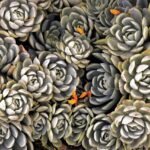 Comparing Sizes: A Guide to the Different Sizes of Succulents
Comparing Sizes: A Guide to the Different Sizes of SucculentsAdditionally, observe the stems of the succulent. Are they woody or more soft and pliable? The stem characteristics can also help narrow down the possibilities when it comes to identifying the tiny yellow flowered variety.
Furthermore, take note of the growth pattern of the plant. Does it form rosettes or have a trailing habit? Understanding the growth habit of the succulent can be another helpful clue in identifying the specific variety.
Research and consult reliable online resources
In the age of technology, the internet can be a valuable tool for identifying succulents. There are numerous websites, forums, and online communities dedicated to the subject, where experienced gardeners and enthusiasts share their knowledge and experiences.
When using online resources, make sure to consult reliable and reputable websites. Look for websites that are known for their accurate information on succulent identification. These websites often provide detailed descriptions, photographs, and even interactive features to help you narrow down your search.
Joining online forums or communities can also be beneficial. Engage with fellow succulent enthusiasts and seek their assistance in identifying your specific variety. Share detailed descriptions and clear photographs, as this will increase the chances of receiving accurate identification suggestions.
Consider seeking professional help
If all else fails and you're still struggling to identify the tiny yellow flowered succulent, don't hesitate to seek professional help. There are succulent specialists and botanists who can provide expert advice and assistance in identifying different types of succulents.
Reach out to local botanical gardens, horticultural societies, or universities with botanical departments. They may have experts who can help you identify the specific variety of succulent you're interested in.
 Can Succulents Imitate the Appearance of a Human Brain?
Can Succulents Imitate the Appearance of a Human Brain?Remember, succulent identification can be a fun and rewarding process. By visiting nurseries, observing physical attributes, utilizing online resources, and seeking professional help when needed, you'll be well on your way to discovering the name of the tiny yellow flowered succulent that has piqued your interest.
Use online plant databases to search for succulents with tiny yellow flowers
When it comes to identifying succulents with tiny yellow flowers, the internet can be a valuable resource. Online plant databases provide a wealth of information and images that can help you in your search. Whether you're a beginner or an experienced succulent enthusiast, these databases can be a great tool to expand your knowledge and discover new varieties.
Why use online plant databases?
Online plant databases are a convenient and efficient way to access information about various succulent species. They offer a centralized platform where you can search for specific characteristics, such as tiny yellow flowers, and find detailed descriptions, care tips, and even user reviews.
By using online plant databases, you can:
- Explore a wide range of succulent species with tiny yellow flowers
- Learn about their unique characteristics and growth habits
- Find out the ideal growing conditions and care requirements
- View high-quality images to aid in identification
- Read reviews and experiences from other succulent enthusiasts
Popular online plant databases for succulent identification
Here are some popular online plant databases that can help you in your quest to identify succulents with tiny yellow flowers:
- SucculentGuide.com: This comprehensive database offers an extensive collection of succulent species, including those with tiny yellow flowers. It provides detailed information about each species, along with care instructions and images.
- PlantSnap: This user-friendly app allows you to take photos of plants and instantly identify them. It has a vast database of succulents, making it a handy tool for identifying those with tiny yellow flowers.
- World of Succulents: With a wide variety of succulent species listed, this database provides detailed information on their characteristics, including flower color. It also offers helpful articles and tips for succulent care.
Remember to cross-reference information from multiple sources to ensure accuracy when identifying succulents with tiny yellow flowers. Each database may have its own unique collection and information, so exploring different platforms can lead to a more comprehensive understanding.
 Discover the Stunning Resemblance: A Lettuce-Like Succulent
Discover the Stunning Resemblance: A Lettuce-Like SucculentSo, if you're on the hunt for succulents with tiny yellow flowers, don't forget to harness the power of online plant databases. They can be a valuable tool in expanding your succulent collection and knowledge.
Keep a plant journal and document important details about the succulent to aid in identification
When it comes to identifying succulents, it's essential to keep a plant journal. This will help you document important details about the succulent, making it easier to identify in the future. By recording specific characteristics and observations, you can create a useful reference guide for yourself.
Here are some key details to note in your plant journal:
- Leaf Shape: Take note of the shape of the succulent's leaves. Are they thick and fleshy, or thin and cylindrical? Are they triangular, oval, or heart-shaped?
- Leaf Color: Observe the color of the leaves. Are they green, blue-green, purple, or variegated? Take note of any patterns or variations in color.
- Texture: Pay attention to the texture of the leaves. Are they smooth, fuzzy, or covered in tiny hairs?
- Growth Habit: Determine whether the succulent grows in a rosette shape, forms offsets, or trails along the ground.
- Flower Appearance: Note the characteristics of the flowers. Are they small or large? What color are they? Do they have any distinct markings or patterns?
- Overall Size: Measure the height and width of the succulent, as well as the size of its leaves.
- Location and Lighting: Record where the succulent is growing and the amount of sunlight it receives. This information can help with identifying specific succulent species that thrive in certain conditions.
By documenting these details and any other observations, you'll have a comprehensive record of your succulents. This can be immensely helpful when trying to identify a specific variety, especially if you come across a tiny yellow flowered succulent.
Remember to take clear and detailed photographs of your succulents as well. These images can serve as visual references and make it easier to compare and identify your plants.
Overall, maintaining a plant journal is an excellent practice for succulent enthusiasts. Not only does it aid in identification, but it also allows you to track the growth and development of your succulents over time. So grab a notebook and start documenting those tiny yellow flowered succulents today!
 Exploring the Existence of Naturally Blue Succulents: Fact or Fiction?
Exploring the Existence of Naturally Blue Succulents: Fact or Fiction?Explore books or online resources dedicated to succulent identification
If you're new to the world of succulents and want to learn more about identifying different varieties, there are several resources available to help you. One option is to explore books that are specifically dedicated to succulent identification. These books often feature detailed descriptions and photographs of various succulent species, making it easier for you to identify the tiny yellow flowered variety you're interested in.
Another convenient option is to turn to online resources. There are numerous websites and forums where succulent enthusiasts share their knowledge and experiences. These platforms often have dedicated sections or threads where you can post pictures of your succulent and ask for identification help from the community. Remember to provide clear and detailed images to increase the chances of accurate identification.
When using online resources, it's important to cross-reference the information you find to ensure accuracy. While most communities are knowledgeable and helpful, there is always a possibility of misidentification. Double-checking with multiple sources can help you confirm your findings and avoid any confusion.
Whether you choose to explore books or rely on online resources, dedicating time to study and research is key. The more you educate yourself on succulent identification, the better equipped you'll be to identify the tiny yellow flowered variety you're searching for.
Frequently Asked Questions
1. How can I identify a succulent with tiny yellow flowers?
Look for characteristics such as rosette-shaped leaves, thick stems, and small, star-shaped yellow flowers.
2. Are there any specific types of succulents that have tiny yellow flowers?
Yes, some popular succulents with tiny yellow flowers include Sedum album, Crassula capitella, and Echeveria elegans.
 Air Plants vs Succulents: Differences and Similarities
Air Plants vs Succulents: Differences and Similarities3. Do all succulents with tiny yellow flowers require the same care?
No, different succulents have varying care requirements. It is important to research the specific succulent species to understand their individual needs.
4. How do I ensure my succulent with tiny yellow flowers thrives?
Provide adequate sunlight, well-draining soil, and water only when the soil is completely dry. Avoid overwatering, as succulents are prone to root rot.
If you want to read more articles similar to Succulent Identification: Discovering the Tiny Yellow Flowered Variety, you can visit the Identification category.


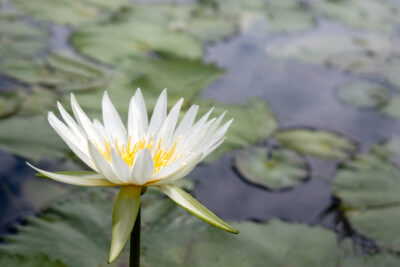
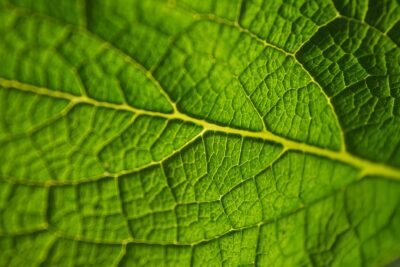
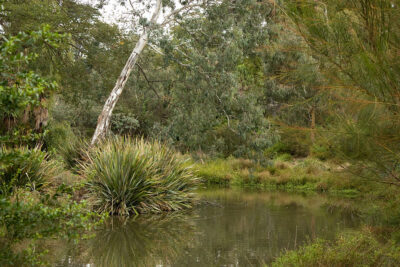

You Must Read